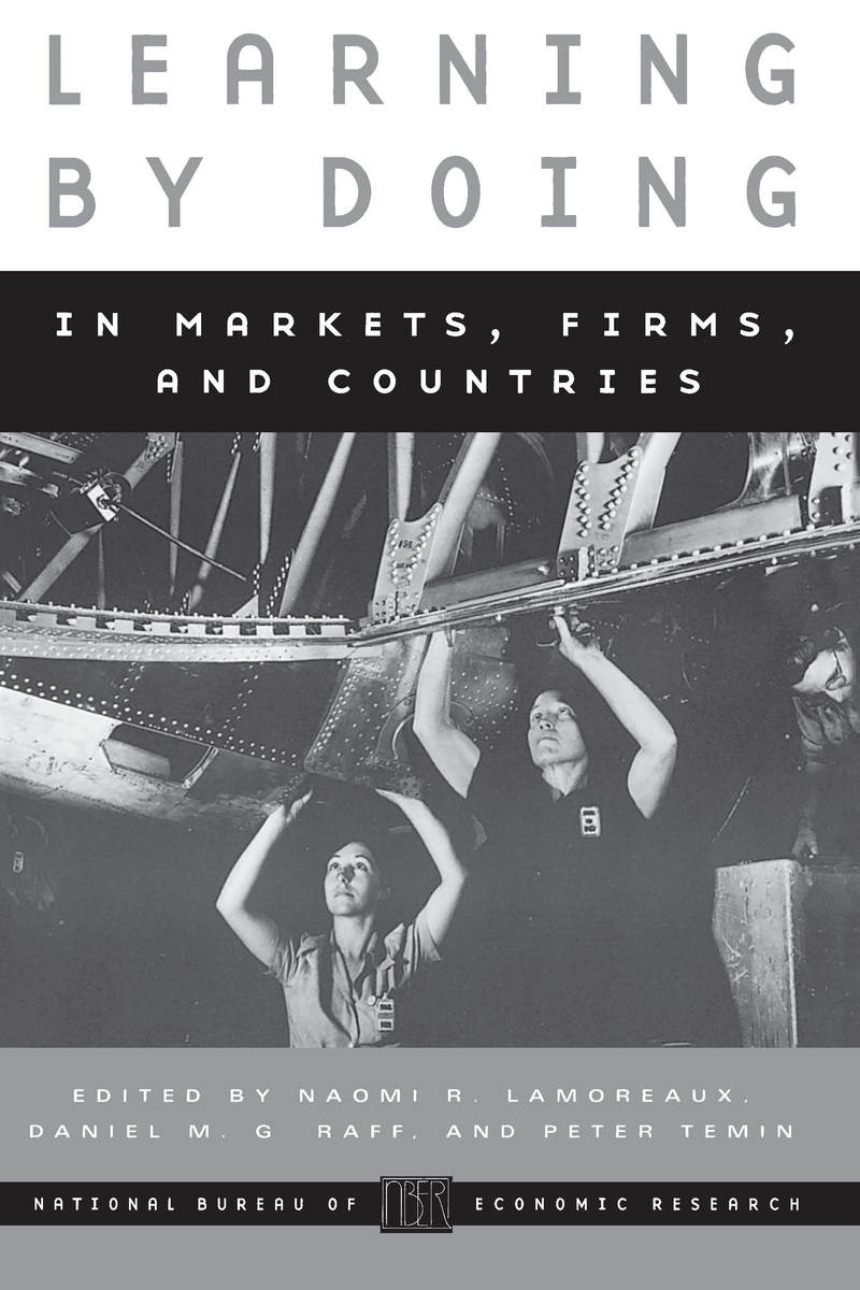Learning by Doing in Markets, Firms, and Countries
Learning by Doing in Markets, Firms, and Countries draws out the underlying economics in business history by focusing on learning processes and the development of competitively valuable asymmetries. The essays show that organizations, like people, learn that this process can be organized more or less effectively, which can have major implications for how competition works.
The first three essays in this volume explore techniques firms have used to both manage information to create valuable asymmetries and to otherwise suppress unwelcome competition. The next three focus on the ways in which firms have built special capabilities over time, capabilities that have been both sources of competitive advantage and resistance to new opportunities. The last two extend the notion of learning from the level of firms to that of nations. The collection as a whole builds on the previous two volumes to make the connection between information structure and product market outcomes in business history.
The first three essays in this volume explore techniques firms have used to both manage information to create valuable asymmetries and to otherwise suppress unwelcome competition. The next three focus on the ways in which firms have built special capabilities over time, capabilities that have been both sources of competitive advantage and resistance to new opportunities. The last two extend the notion of learning from the level of firms to that of nations. The collection as a whole builds on the previous two volumes to make the connection between information structure and product market outcomes in business history.
356 pages | 6 x 9 | © 1998
National Bureau of Economic Research Conference Report
Economics and Business: Business--Business Economics and Management Studies
Table of Contents
Introduction by Naomi R. Lamoreaux, Daniel M. G. Raff, and Peter Temin
1. Inventors, Firms, and the Market for Technology in the Late Nineteenth and Early Twentieth Centuries
Naomi R. Lamoreaux and Kenneth L. Sokoloff
Comment: Adam B. Jaffe
2. Patents, Engineering Professionals, and the Pipelines of Innovation: The Internalization of Technical Discovery by Nineteenth-Century American Railroads
Steven W. Usselman
Comment: Jeremy Atack
3. The Sugar Institute Learns to Organize Information Exchange
David Genesove and Wallace P. Mullin
Comment: Margaret Levenstein
4. Learning by New Experiences: Revisiting the Flying Fortress Learning Curve
Kazuhiro Mishina
Comment: Ross Thomson
5. Assets, Organizations, Strategies, and Traditions: Organizational Capabilities and Constraints in the Remaking of Ford Motor Company, 1946-1962
David A. Hounshell
Comment: Sidney G. Winter
6. Sears, Roebuck in the Twentieth Century: Competition, Complementarities, and the Problem of Wasting Assets
Daniel M. G. Raff and Peter Temin
Comment: Thomas J. Misa
7. Marshall’s "Trees" and the Global "Forest": Were "Giant Redwoods" Different?
Leslie Hannah
Comment: Bruce Kogut
8. Can a Nation Learn? American Technology as a Network Phenomenon
Gavin Wright
Comment: Alexander J. Field
Contributors
Name Index
Subject Index
1. Inventors, Firms, and the Market for Technology in the Late Nineteenth and Early Twentieth Centuries
Naomi R. Lamoreaux and Kenneth L. Sokoloff
Comment: Adam B. Jaffe
2. Patents, Engineering Professionals, and the Pipelines of Innovation: The Internalization of Technical Discovery by Nineteenth-Century American Railroads
Steven W. Usselman
Comment: Jeremy Atack
3. The Sugar Institute Learns to Organize Information Exchange
David Genesove and Wallace P. Mullin
Comment: Margaret Levenstein
4. Learning by New Experiences: Revisiting the Flying Fortress Learning Curve
Kazuhiro Mishina
Comment: Ross Thomson
5. Assets, Organizations, Strategies, and Traditions: Organizational Capabilities and Constraints in the Remaking of Ford Motor Company, 1946-1962
David A. Hounshell
Comment: Sidney G. Winter
6. Sears, Roebuck in the Twentieth Century: Competition, Complementarities, and the Problem of Wasting Assets
Daniel M. G. Raff and Peter Temin
Comment: Thomas J. Misa
7. Marshall’s "Trees" and the Global "Forest": Were "Giant Redwoods" Different?
Leslie Hannah
Comment: Bruce Kogut
8. Can a Nation Learn? American Technology as a Network Phenomenon
Gavin Wright
Comment: Alexander J. Field
Contributors
Name Index
Subject Index
